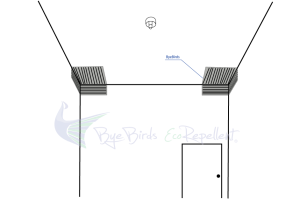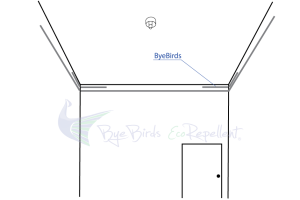How to select the ByeBirds® spacing rates:
Spacing recommendation distance for applying the space of the ByeBirds trays or plates depends on the population of the birds, the nesting and roosting sites, therefore the areas will be of:
A. Nests place: for places where nests were located before cleaning, add 20-30g of ByeBirds between 5 -10 cm.
B. High problem areas: places where nesting and night roosting. Place 20-25g about each 15cm.
C. Medium problem areas: places where daytime roosting/loafing or areas for overlooking a food source. Place 16-20g between 20-25cm.
D. Low problem areas: places where new-builds and occasional roosting areas. Place 16-20g between 25-30cm.
E. For roof areas the vertical distance of plates with a minimum of 16g can be up to 60cm apart while considering the borders according as above.
Important facts to consider:
- The most important point is to place ByeBirds where nesting places and therefore prevent their return
- In general, spaces between trays should not be greater than the bird’s wingspan.
- Larger birds such as seagulls and crows require more product quantity per tray, but they can be placed at a larger distance between them
- For sparrows, ByeBirds must be applied in a continuous straight line of approximately 1 cm thick, or in several parallel lines leaving a small distance among them.
- The more birds there are, the more product to be applied, and with less space separation distance. Regularly different distances have to be used within the same job.
- For severe severe problem, decide whether to apply two or more ByeBirds lines.
- Each installation site is different and needs to be considered and studied considering all environmental and structural conditions. Spacing may be increased or decreased accordingly.
- If after 2 weeks after the installation, there are still birds around, you may apply more ByeBirds in that area.
- Birds do not eat ByeBirds. Missing product may be due to birds taking it with them on their feathers and feet. Reapply on the affected trays.
- Do not install during rainy days to avoid silicone adherence problems and prevent trays from falling.


